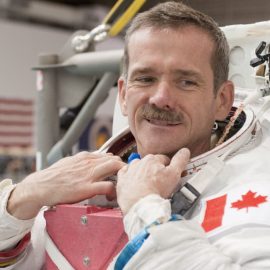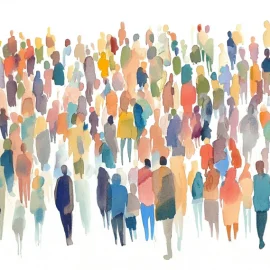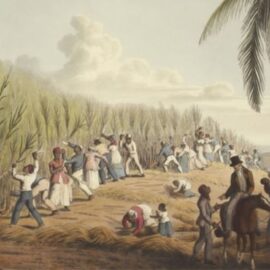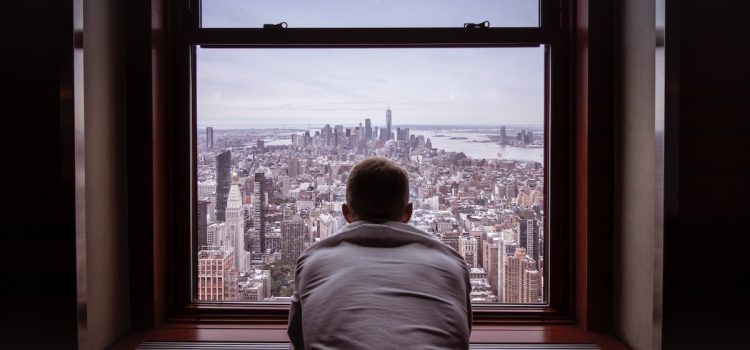
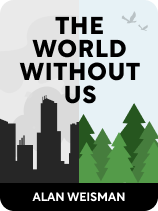
This article is an excerpt from the Shortform book guide to "The World Without Us" by Alan Weisman. Shortform has the world's best summaries and analyses of books you should be reading.
Like this article? Sign up for a free trial here.
What are the effects of urbanization on the environment? How are animals impacted? Is the greenery in cities natural and beneficial?
In The World Without Us, science journalist Alan Weisman aims to address humanity’s environmental impact by imagining a world in which nature is allowed to flourish. He takes a close look at how cities impact the natural world.
Read more to learn what Weisman discovered about urbanization’s mark on the planet.
The Effects of Urbanization on the Environment
In the modern world, farms primarily exist to feed our growing urban, technological society. That society is maintained by a network of physical connectivity, both for transportation and power, that stretches around the globe like a web and requires constant maintenance in order to function. Weisman discusses the effects of urbanization on the environment. He explains how our cities have altered the natural landscape, how our electrical infrastructure acts as a danger to wildlife, and how the places where our energy is produced are potential time bombs for the environment.
Weisman writes that sprawling modern cities completely obscure the original landscape on which they were built. A prime example is Bangkok, the capital of Thailand, which was constructed over the marshy delta of the Chao Phraya River (and as a result, is steadily sinking, making it a case study of the threats of climate change). In most large cities, what greenery exists is largely in the form of invasive ornamental plants that don’t feed what native ecosystem is left. Instead, the city’s new ecosystem is dominated by species that rely on us (and our trash) to survive—rats, cockroaches, and the like.
(Shortform note: Now covering 4% of the planet, urban landscapes are environments in their own right, each with a unique balance of flora and fauna. City planners have begun to recognize this, especially the importance of creating more green space. In addition to the health benefits urban green spaces provide for humans, such as opportunities for exercise, stress reduction, and improved air quality, they combat the heating effect of buildings and pavement and provide habitats for animal species, not only those that thrive on human waste like the ones that Weisman describes.)
Cities, towns, and modern farms all rely on electricity to function, connected by thousands of towers supporting millions of kilometers of power lines worldwide. While these lines are the lifeblood of technology, Weisman says they’re a threat to many animal species, especially birds. With forests cleared for farms and cities, birds turn to electrical towers as places to perch and nest. The lights and magnetic fields around transmission towers confuse birds’ sense of navigation, and those with large wingspans such as eagles and condors are particularly vulnerable to electrocution if their wings brush two power lines at once, completing a circuit with their bodies. Some species’ numbers have fallen as much as two-thirds of their prior population.
(Shortform note: While transmission lines and towers pose a danger to wildlife, some power companies are turning the land their lines cover into regions supporting native species that otherwise suffer in human-managed landscapes. Studies have shown that when the land under power lines is allowed to revert to its natural state—as opposed to being mowed as a suburban lawn—plant, bird, and insect species flourish. The Electric Power Research Institute promotes the idea that electrical transmission corridors can become highways for thousands of pollinator species and the native ecosystems they support. Meanwhile, conservationists are studying ways to protect birds from power lines, such as using UV light to make them more visible.)
All of our power comes from a source, whether it’s the electricity that powers our cities or the fuel that drives our transportation systems. Weisman highlights two types of power sources as examples of man-made dangers to both the present and the future. The first are nuclear power plants, of which there are more than 400 in the world. The second are the petrochemical refineries that refine oil and gas into fuel for cars, airplanes, and ships, as well as into a variety of other industrial products. All of these plants and refineries work with highly volatile materials and require constant human supervision to maintain them and avoid catastrophic failures.
(Shortform note: With or without the presence of humans, our power infrastructure is vulnerable to the ravages of nature. In 2011, Japan’s Fukushima Daiichi nuclear plant was hit by a massive tsunami triggered by an offshore earthquake that measured 9.0 on the Richter scale. The plant’s automated systems shut down the reactors as soon as the quake was detected, but the tsunami destroyed the generators that ran the cooling system, resulting in three reactors melting down. In the aftermath, cleanup crews have built protective structures around the reactors to contain contaminated water and radioactive debris. In Weisman’s scenario, the melted radioactive fuel and other hazardous chemicals would have been left to disburse into the environment.)

———End of Preview———
Like what you just read? Read the rest of the world's best book summary and analysis of Alan Weisman's "The World Without Us" at Shortform.
Here's what you'll find in our full The World Without Us summary:
- What would happen to Earth if the human race disappeared
- How the planet would benefit from a human extinction
- What the immediate vs. long-term effects would look like

